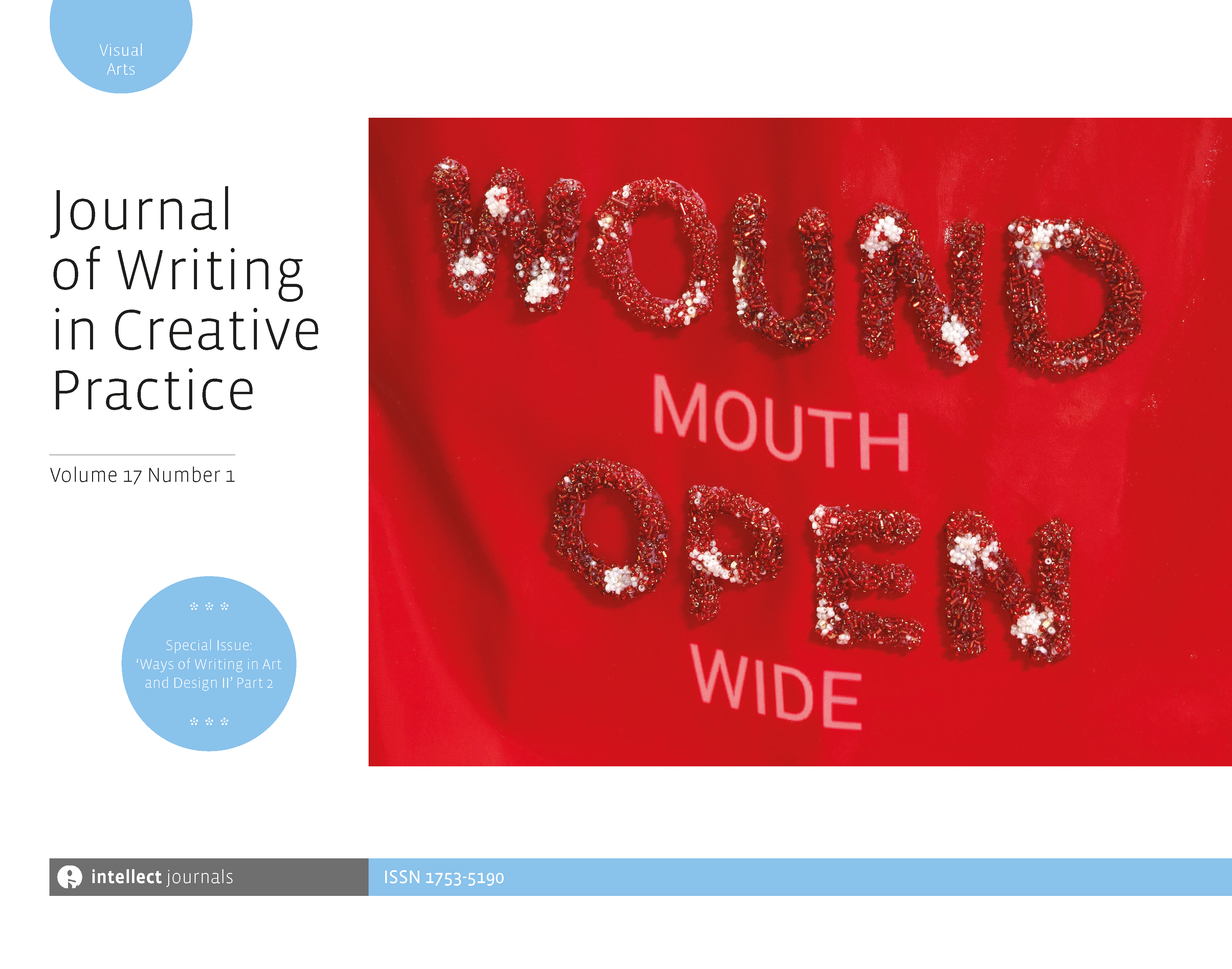-
f Hollowed-out genring as a way of purposefully embracing troublesome knowledge: Orientation and de-orientation in the learning and teaching of fine art
- Source: Journal of Writing in Creative Practice, Volume 11, Issue 1, Jun 2018, p. 99 - 120
-
- 01 Jun 2018
Abstract
This text emerges from ongoing research focused on pedagogical developments within the curriculum of the Year 0 Fine Art pathway at Norwich University of the Arts. Within the teaching and learning of Fine Art, students will work between both written and visual genres, often struggling to rationalize the two. As part of our research, we have developed practice-based research tasks that work in parallel to the traditional academic essay, an a-typical visual genre of equal status. We believe that through such dual genring, a more appropriate and wider range of resources will, over time, begin to work symbiotically with the essay. The research tasks serve as destabilizing prompts; they constitute a hollowed-out genre that encourages students to enter into a de-orientated, liminal, conceptual space within their learning. With the introduction of specifically developed reflective models, students are able to navigate this liminal space and are afforded opportunities for developmental reorientations to the threshold concepts inherent with the Fine Art discipline. Drawing upon examples of current practice and student learning, we demonstrate how a process of genring and the use of reflective tools encourage students to both confront aspects of troublesome knowledge and see critical writing as an important facet of their practice.


